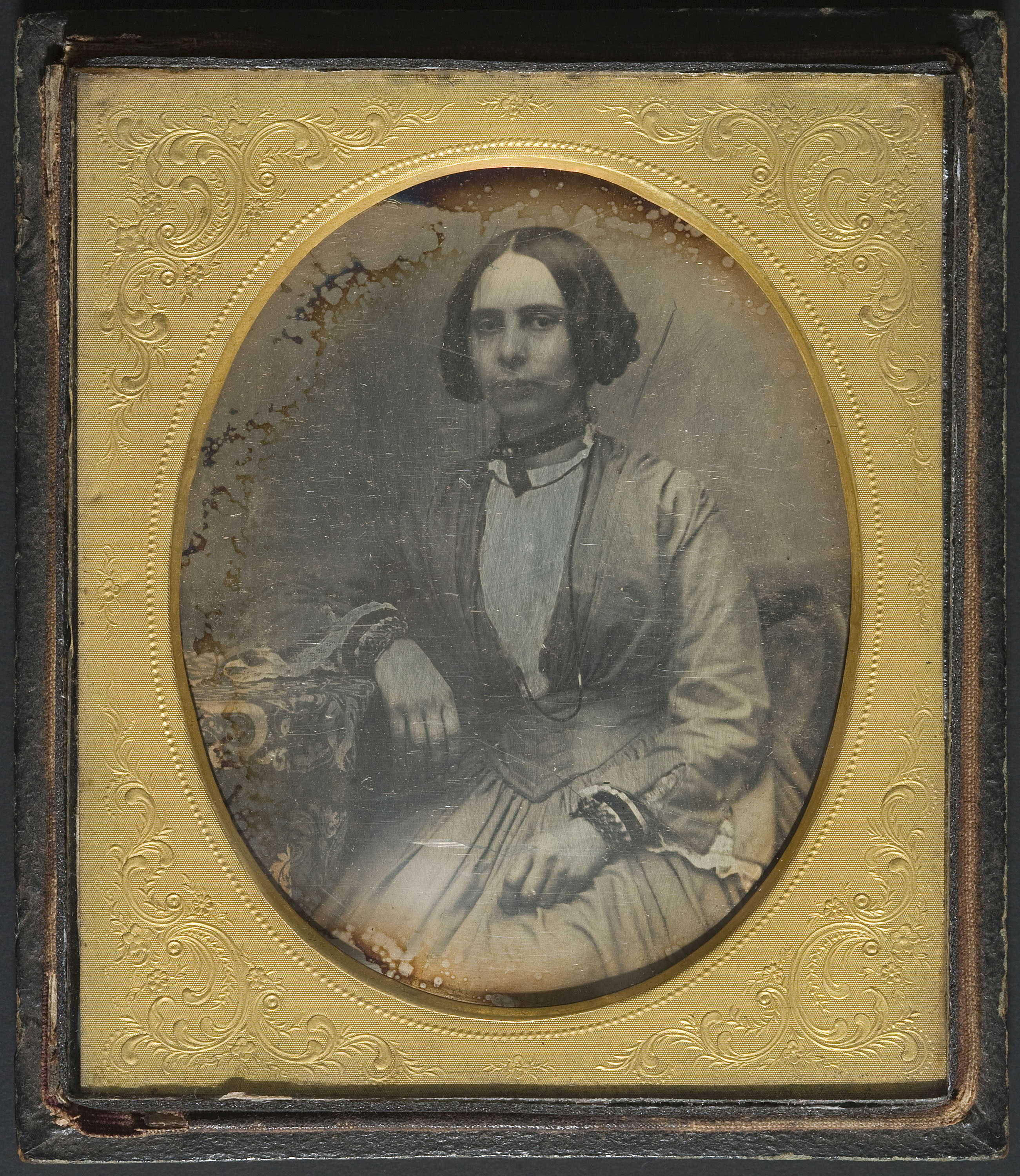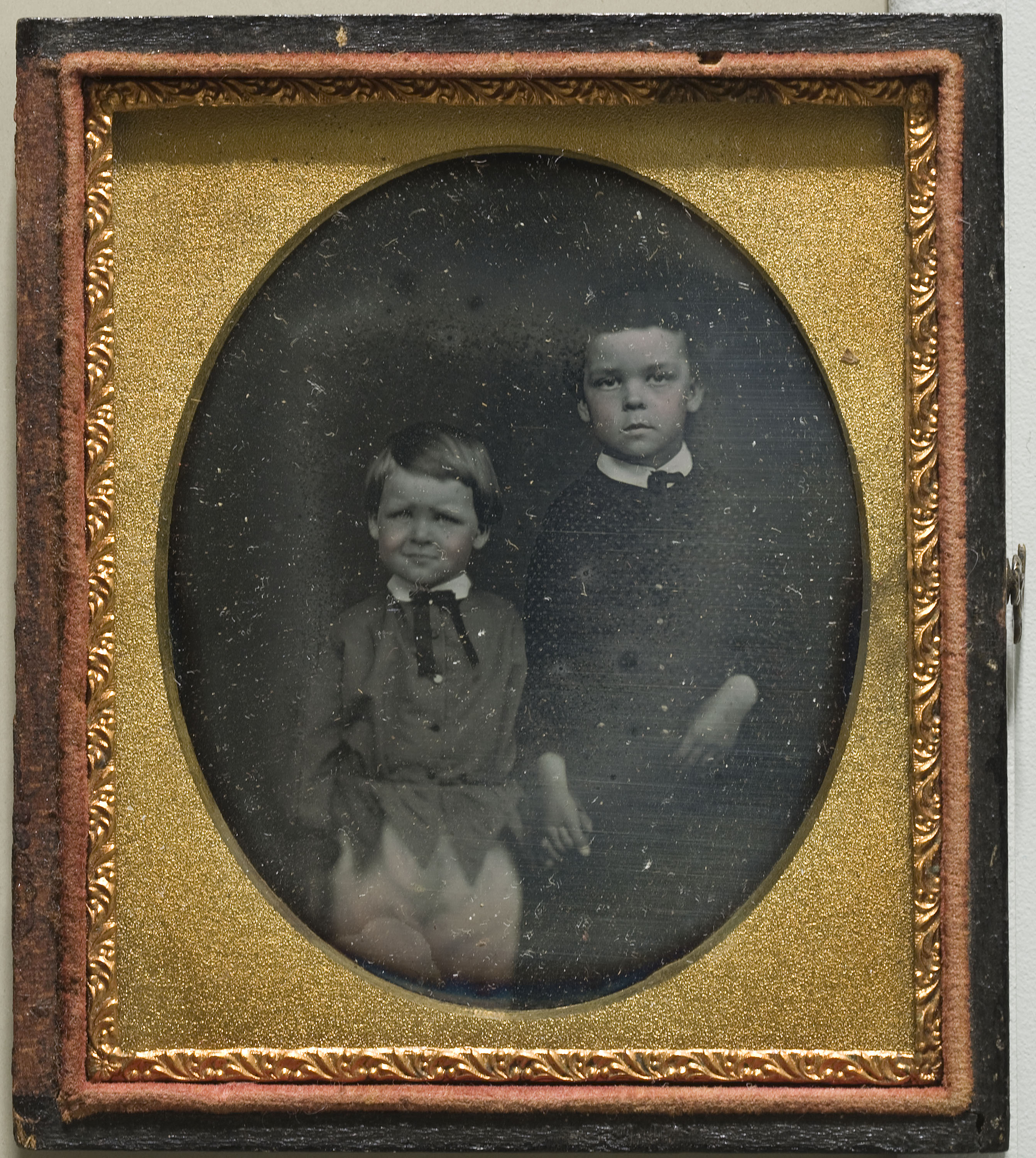Martí Llorens and Rebecca Mutell
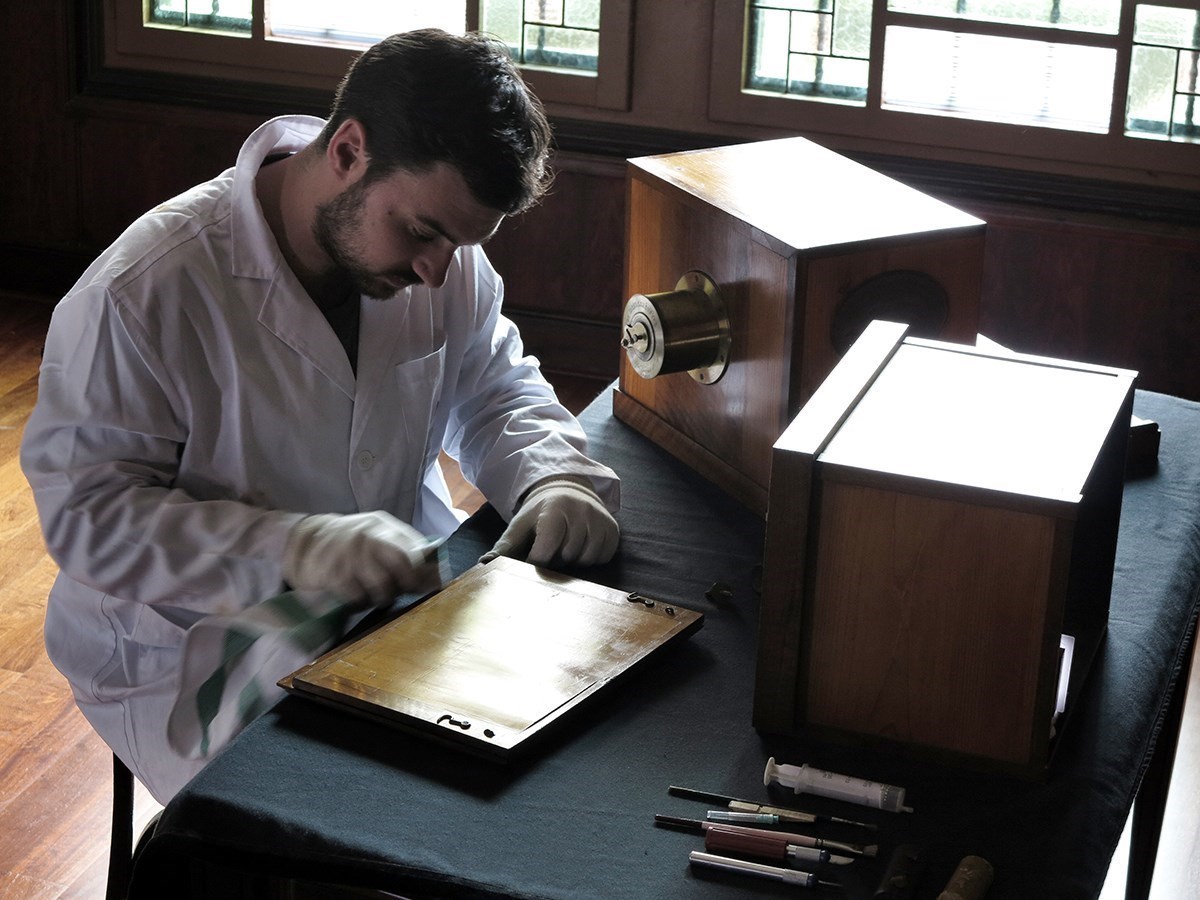
Rafel Forga carrying out the restoration work of the camera. Fotografía: © Martí Llorens / Factoría Heliográfica. 2015
“I have found a way of fixing the images of the camera!
I have seized the fleeting light and imprisoned it!
I have forced the sun to paint pictures for me!”
One day in 1824, uttering these words, the painter and businessman Louis-Jacques-Mandé Daguerre (1787-1851) rushed into the shop in the Quai de l’Horloge in Paris of his regular lens supplier, the optician Vincent Chevalier and his son Charles, both well known for building microscopes and telescopes.
Years later, Charles Chevalier was to write in his memoirs that Daguerre had perhaps spoken too soon. It was not until 1835, in a publication called the Journal des Artistes, when the fact that Daguerre had found the way to capture the image produced by the camera on a plate that he himself had prepared was mentioned for the first time. It was then two years since the death of the inventor Joseph Nicéphore Niépce (1765-1833), with whom Daguerre had worked on the possibility of fixing camera images.

Portrait of J.M. Daguerre by Jean-Babtiste Sabarier-Blot.1844. George Eastman House Collection, International Museum of Photography and Film
The official account of the complete Daguerreotype process, the first operational and commercially viable photographic process in history, was given on 19th August 1839 at the Académie des sciences in Paris by the scientist and politician François Arago (1786-1853). Three months later, the first photography session in Spain took place at a public event organized by the Reial Acadèmia de Ciències i Arts de Barcelona (RACAB). Using a Daguerre-Giroux camera purchased in Paris, the engraver Ramon Alabern i Moles (1811-1888) obtained a Daguerreotype showing a view of two buildings in the Pla de Palau in Barcelona. The role played in this historic photograph by the scientist and doctor Pere Felip Monlau i Roca (1808-1871), a member of the RACAB, was fundamental, as it was he who organized the purchase of this device from Alabern.
In 2014 the 175th anniversary of that first photograph was celebrated. It was the theme of the exhibition The Daguerreotype: the Beginnings of Photography, organized by the Arxiu Fotogràfic de Barcelona (Barcelona Photographic Archive). New information about the event and Ramon Alabern was published in its catalogue. Ever since 1839 the RACAB has conserved the camera with which that first Daguerreotype – now lost – was obtained.
From the camera obscura to the photographic camera
At the beginning of the nineteenth century the portable camera obscura, an optical instrument well known since the seventeenth century, was converted into the photographic camera. With this new device, it was no longer necessary to watch the world go by in motion through a polished glass screen and then trace a sketch with a pencil on a thin sheet of paper. The aim now was to capture that scene on the glass, its light reflected. It was necessary to know how to expose a photosensitive plate, capable of fixing the light and thus obtaining a detailed and permanent image of the world.
Not only did this revolutionary new operation require the study and careful application of chemistry and optics, it was also the result of another way of conceiving the world, of a new way of thinking, of looking, which converged in Europe in the early nineteenth century. This new period also required a new optical instrument designed to take photographs and not do drawings. The first model of a camera to go on sale was Le Daguerreotype, in 1839.
Le Daguerreotype
Le Daguerreotype was the first piece of photographic equipment to be marketed in the world. Designed by Daguerre himself, it was sold in Paris by Alphonse Giroux et Cie. and Susse Frères, with a lens built by Chevalier and later also by Lerebours.
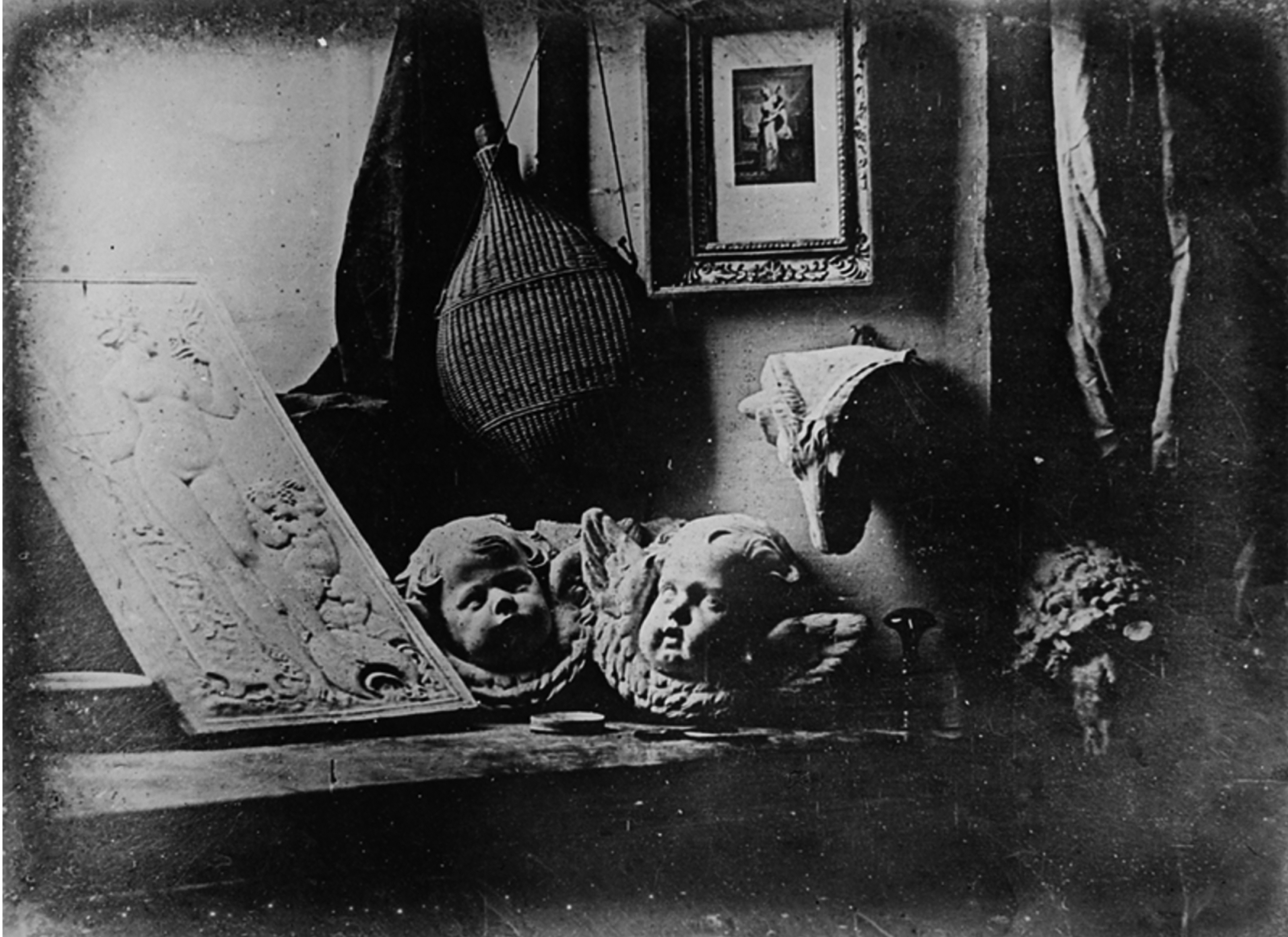
L’Atelier de l’artiste (the artist’s studio) , 1837, Louis Daguerre [Public domain], via Wikimedia Commons
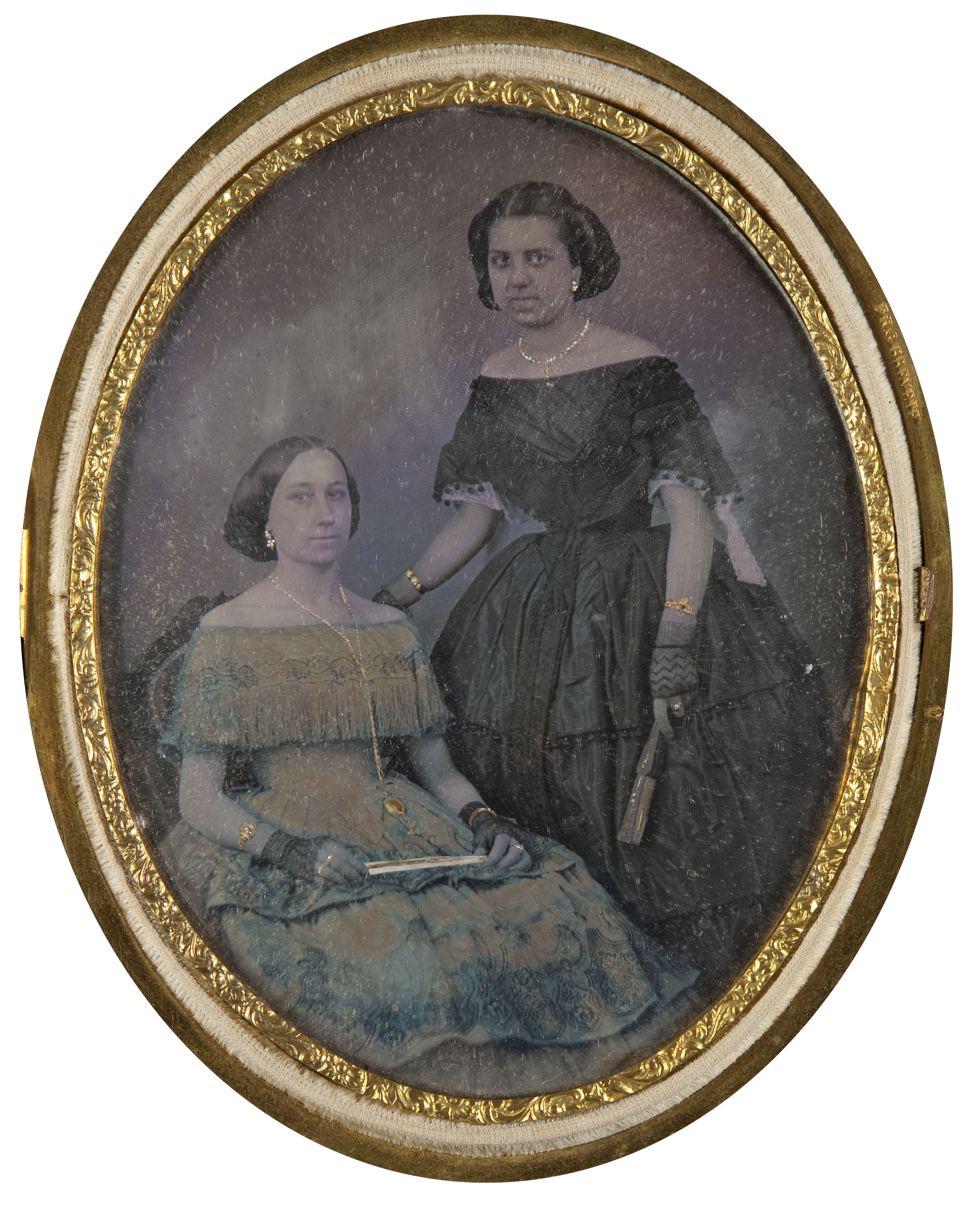
Moliné y Albareda. Portrait of two women. Coloured daguerrotype, circa 1860, Museu Nacional d’Art de Catalunya
The Daguerre-Giroux camera no. 178
The RACAB’s camera includes the guarantee stamp of the seller Alphonse Giroux et Cie. It is signed by Louis Daguerre and numbered 178, and it is in quite good condition. Of the rest of the equipment, the chemical products box and the box in which the plates were stored have been preserved. Other circumstances converge to make this equipment, fundamental for the history of science, technology and photography, unique:
- As the 1839 advertising poster said, with this camera the first view was obtained in Spain using the wonderful Daguerreotype process. This why it is so valuable, both historically and symbolically, for our city and our country.
- The RACAB’s camera and the one purchased in 1841 by the Physics Department of Uppsala University in Sweden seem to be the only two of this type that are still owned by the institution that bought them in the nineteenth century.
- The staging of a public photography session for the purpose of obtaining the first photograph in a country seems to be a unique case in the history of photography.
The restoration and research project
Photographer Martí Llorens, a Fine Art graduate of the University of Barcelona, and photographer Doctor Rebecca Mutell, who has a PhD in Fine Art awarded by the University of Barcelona, are directing the restoration and research project based on this photographic equipment. Interested in research, teaching and the practice of art using old photographic processes, they are working together on these subjects under the name Factoría Heliográfica.
The first stage consisted in the restoration of this equipment in order to ensure its correct conservation for the future. This work was done by Rafel Forga, a Fine Art graduate of the University of Barcelona, who specializes in the restoration of nineteenth-century photographic equipment and the construction of equipment in order to carry out old photographic processes.
The story of the restoration of the RACAB’s Daguerre-Giroux camera has been told in an audio-visual directed by Lalo García and produced by Txell Sabartés.
Finally, the funding for this restoration work has kindly been provided by Valérie de Marotte and Vicenç Boned, art collectors who until a year ago ran the Tagomago photographic gallery in Barcelona.
With the restoration finished, our goal is to conduct multidisciplinary research with the aims of linking the RACAB’s camera to the cameras of this kind that are conserved all over the world, to raise its profile and to generate new theoretical content to contribute to the historical account of the origins of photography in Catalonia.
In short, it is a case of properly valuing and projecting what might well be called the Point Zero of the History of Photography in Catalonia.
Thinking back to that first photograph obtained in the Pla de Palau in Barcelona by the engraver Ramon Alabern in 1839, it is both moving and surprising to learn that in 2014, according to Google, and through the website Sightsmap, Barcelona was the third most photographed city in the world, behind New York and Rome.
Martí Llorens and Rebecca Mutell
This article was originally published in the blog of the Fotografia a Catalunya portal. We thank the authors for their permission to include it in the museum’s blog.
References
GERNSHEIM, H. ; GERNSHEIM, A., L.J.M.Daguerre. The world first photographer, Cleveland/Nova York, The World Publishing Company, 1956, p. 47.
CHEVALIER, A., Étude sud la vie et els travaux de Charles Chevalier, ingenieur opticien, París, Imprimerie Bonventure et Ducessois, 1862, p. 139-147.
Journal des Artistes, 27/09/1835, p. 203.
TORRELLA, R. et al., El daguerreotip. L’inici de la Fotografia, Barcelona, Ajuntament de Barcelona/Arxiu Fotogràfic de Barcelona/Institut de Cultura de Barcelona, 2014.
Relative to the beginnings of photography in Spain, see; RIEGO, B., La introducción de la fotografía en España. Un reto científico y cultural, Girona, CCG Edicions/Centre de Recerca i Difusió de la IMATGE, CRDI/Ajuntament de Girona, 2000.

